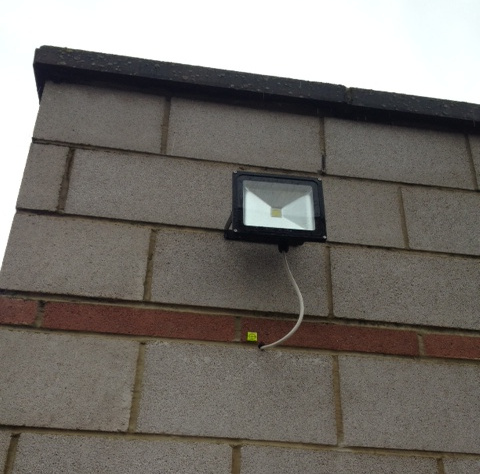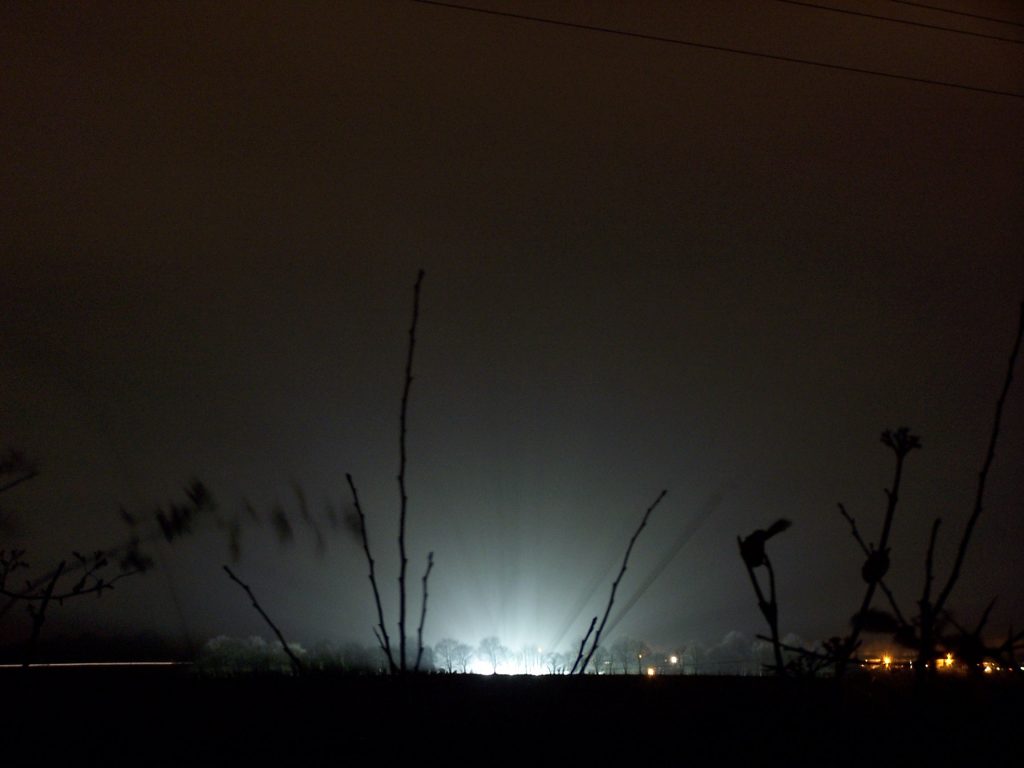What is Light Pollution?

It’s not difficult to define light pollution. It’s light that’s wasted and isn’t lighting only the places that need to be lit. Nobody wants to switch off all lights and live in medieval darkness. The solution is “the right light in the right place at the right time”.
Light pollution has increased year on year for several decades and modern, often over-bright LED lights are not helping. Most in fact are too bright for the job and too white (blue-rich), damaging the environment and often intruding into nearby premises to cause light nuisance.
Most people don’t realise the harm light pollution causes. Everyone has grown up with lighting, public and private, that is over-bright and shines where it shouldn’t. It seems normal.
Why does it matter?
Waste of Money and Energy
Running lights unnecessarily is wasteful and is contributing to climate change
Nuisance to others
Intrusive light can cause loss of sleep and tension between neighbours and organisations such as industrial estates, golf courses and transport premises
Harm to biodiversity
Enormous numbers of creatures, large and small, operate at night. The nocturnal behaviour of mammals (especially bats), and of owls, moths and vast numbers of other invertebrates is affected
Skyglow
Waste upward light draws a veil over dark, starlit skies, a sight contemplated by humans for countless thousands of years

5 things you might not know about Light Pollution
The great majority of the world’s population cannot see the Milky Way
From where they live, about 90% of the world’s population cannot see the Milky Way, their home in the vast reaches of the universe. It’s a sad fact that the light from distant stars and galaxies takes hundreds, thousands, even millions of years to reach us. What a tragedy to lose it in the last millisecond of its journey.
At least 30% of outdoor lighting is wasted, releasing atmospheric pollutants
The extra electricity generated creates millions of tonnes of carbon dioxide per year. Control of artificial lighting can help to lower NOx pollution, allowing natural darkness to aid the decay of harmful gases.
Brighter lighting does not mean improved security
Lighting and security don’t necessarily go together. Who benefits from an outdoor ‘security’ light left on in the early hours of the morning? Is it the resident, fast asleep in bed, the police officer in a car far away or the burglar selecting his tools beneath the light? We read about ‘intelligent’ lighting, but lights have no moral discrimination, no bias: they will help both good guys and bad guys to see what they are doing.
Less lighting does not mean reduced safety
Many UK local authorities now switch off streetlights after midnight as a carbon and cost-saving measure. Local and national newspapers often pick up on public uncertainties about this: “PLUNGED INTO DARKNESS” or “SWITCH-OFFS – CRIME-WAVE FEARS”. However, research shows that dimming and switch-offs generally decrease crime rates and, if applied sensibly, have no effect on road accident rates.
No-one knows how much money is wasted
It is difficult to know exact present or future lighting costs: the technology, prices and global demand change too rapidly. The only certainty: wasted light costs us all a lot. European dark-sky organisations have suggested a figure for Europe of seven billion Euros annually. The International Dark-Sky Association cites a figure of two billion dollars annually for the USA.
UK planning regulations cannot deal with poor lighting
Within the UK planning system much outdoor lighting comes under the heading of ‘permitted development’ and is totally uncontrolled. But even when planning consent is required it is day-time aesthetic considerations that are assessed. The impact of the lights at night is often not considered, and neither are their intensity or aim. Further, there are no anti-light pollution design constraints on lighting manufacturers and distributors. You can still buy globe-on-post garden lights and dazzlingly bright so-called ‘security’ lights.
